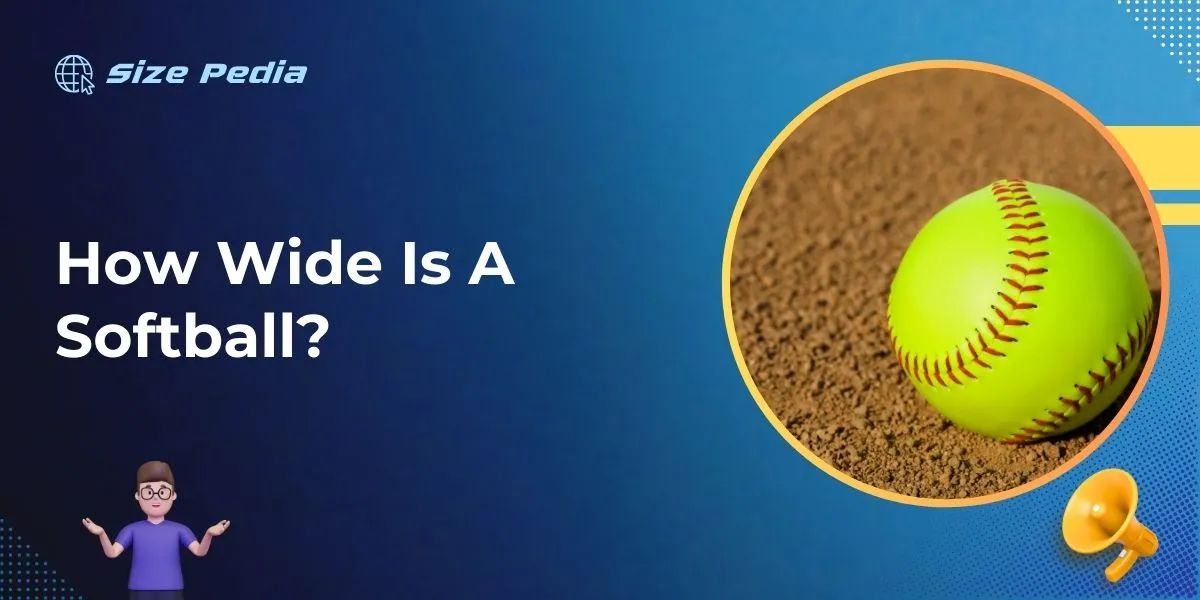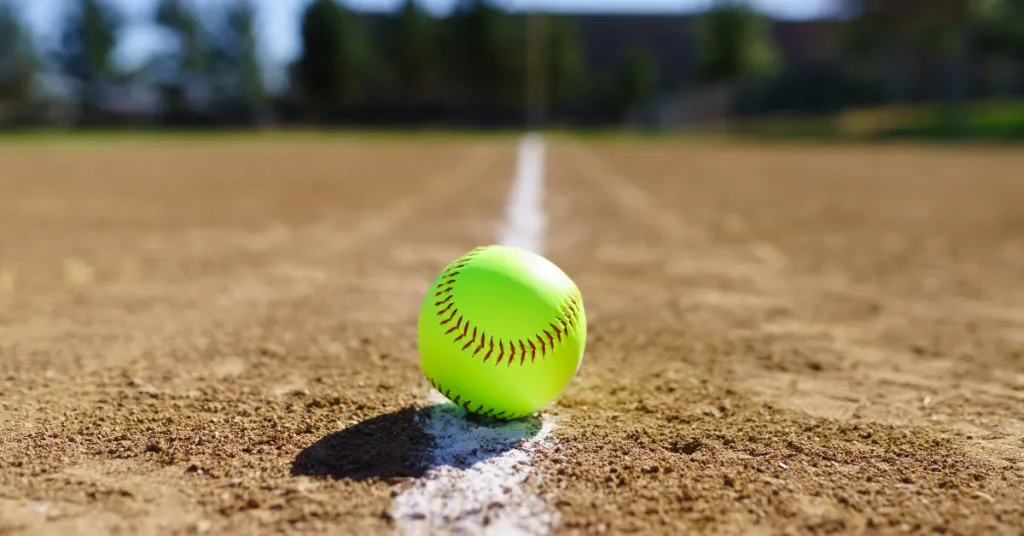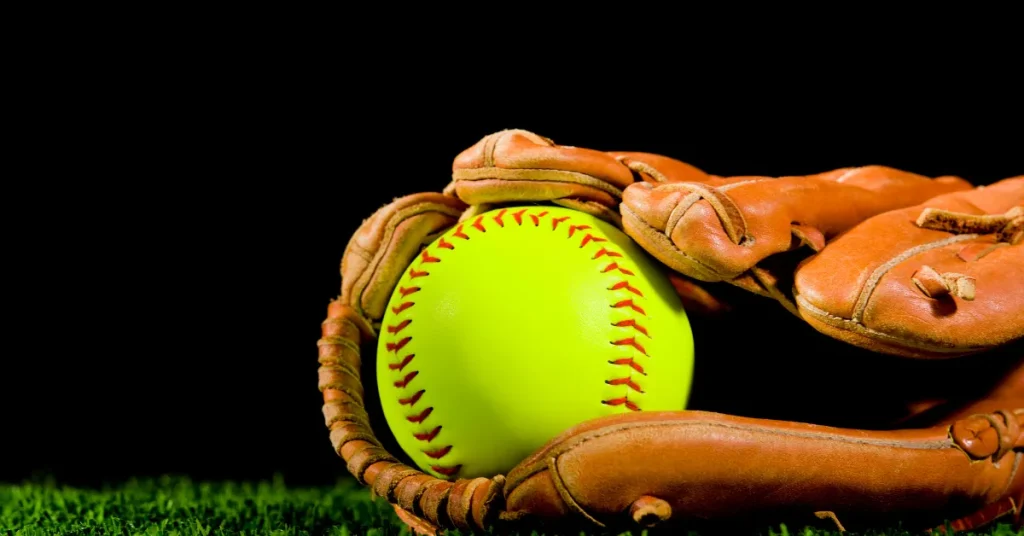A standard softball has a circumference of approximately 12 inches. Its diameter typically measures about 3.8 inches.
Softball, a variant of baseball played primarily by women, uses a larger ball than its counterpart.
This size facilitates easier contact, making it a staple in recreational leagues and competitive levels alike. The ball’s distinct size and bright yellow color help enhance its visibility, which is crucial for both players and spectators.
Understanding the dimensions of a softball is vital for players, coaches, and equipment manufacturers, ensuring the right gear is used for practice and official games.
Whether you’re stepping up to the plate or snatching grounders on the infield, the softball’s size plays a significant role in the dynamics of the game, influencing everything from the pitches thrown to the speed of the game.

The Essence Of Size In Softball
Understanding the dimensions of a softball involves more than just numbers. The size of the ball can affect everything from the pace of the game to the player’s strategy on the field. Let’s explore why the size holds such significance in softball.
Significance Of Softball Dimensions
The official diameter of a softball measures between 11.88 and 12.13 inches. This size affects how players grip, throw, and hit the ball. A larger ball requires a player to adjust their technique compared to other, smaller ball sports.
The weight of the ball, usually between 6.25 and 7.00 ounces, also impacts the game’s dynamics, such as the travel distance when hit and the speed a pitcher can throw. A balanced size and weight are crucial for player performance and safety.
- Size impacts grip and technique
- Weight influences ball speed and distance
- Regulated dimensions ensure fair play and safety
Comparing Softball To Other Ball Sports
When compared to other ball sports, a softball’s size is unique. For example, a standard baseball is significantly smaller with a circumference of 9 to 9.25 inches. This size variation demands different skills and strategies.
| Sport | Ball Circumference | Impact on Game |
| Softball | 11.88 to 12.13 inches | Requires a specific handling technique |
| Baseball | 9 to 9.25 inches | Allows for faster pitching speeds |
| Basketball | 29.5 to 30 inches | Designed for dribbling and shooting |
| Soccer | 27 to 28 inches | Optimized for kicking and control |
This comparison helps to explain why softball players must develop particular skills to handle the ball effectively, setting it apart from similar sports.
Standard Measurements Of A Softball
Understanding standard measurements of a softball is key to players and coaches. Different leagues might have varying specifications.
But a few measurements remain widely accepted. Knowing these helps in selecting the right equipment. It ensures compliance with official standards.
Circumference And Diameter Details
The softball’s size is crucial for proper play. The circumference is the distance around the ball. A regulation softball has a specific range.
Generally accepted, the circumference is about 12 inches (30.48 cm) for fastpitch. Slowpitch softballs can vary, with some reaching 16 inches (40.64 cm).
Size matters when we talk about the diameter. It’s the straight line running through the ball’s center. A standard fastpitch softball’s diameter is roughly 3.8 inches (9.65 cm). This measurement impacts how players grip and handle the ball during the game.
Weight Specifications
A softball’s weight is also standardized. It affects how the ball is pitched, hit, and caught. For fastpitch, the ball’s weight is typically around 6.25 to 7.00 ounces (177 to 198 grams). Slowpitch softballs are slightly heavier, due to their larger size.
To ensure fair play, official games use softballs that meet these standards. This way, all players are on a level playing field.
Factors Influencing Softball Dimensions
Understanding the size of a softball involves more than just numbers. It requires a deep dive into what shapes these numbers. Let’s explore the key factors that determine softball dimensions.
Material And Manufacturing
The make of a softball can vary. Different materials affect the size and weight. Let’s look at some common materials used:
- Leather: Provides durability; may expand slightly over time.
- Synthetic covers: Less prone to weather changes; maintain shape well.
- Composite materials: Create a balance for consistent performance.
In manufacturing, the core and winding process are also vital. They define how tight or loose a ball is. The tighter the winding, the more firm the ball.
Regulatory Standards
Organizations set rules for softball sizes. These standards keep gameplay fair and consistent. Here are the organizations:
| Organization | Standard Size (inches) |
| ASA | 12 (for adults) |
| Little League | 11 |
| NCAA | 12 |
| High School | 12 |
Each organization’s softball must meet specific weight and circumference requirements. This ensures that all players compete with the same ball quality.
Softball Impact On Gameplay And Performance

The size of a softball is a critical factor affecting the game. It influences how players pitch, hit, and strategize on the field.
A standard softball measures approximately 12 inches in circumference, providing unique challenges and opportunities for players. Let’s explore the nuances of how this dimension can impact gameplay and performance.
Pitching Techniques And Ball Size
For pitchers, the size of the softball demands specific handling techniques. The larger circumference means a different grip compared to baseball, affecting pitch speed and trajectory. Here’s how:
- Greater surface area allows for better control of spin.
- The weight of the ball influences pitch velocity.
- Advanced pitches like riseballs or dropballs are achievable due to size.
Understanding and exploiting ball size can make a pitcher formidable on the mound.
Hitting Dynamics
Hitting a softball requires precision and power. The ball’s size affects how batters approach their swing:
- A larger ball presents a bigger target which may seem easier to hit.
- However, with a bigger mass, the batters need more force for a powerful hit.
- Quick reaction times are essential due to the ball’s visibility.
Players adjust their techniques to maximize their chances of connecting with the ball effectively.
| Ball Size | Effect on Pitching | Effect on Hitting |
| 12 inches | More spin control, varied pitches | Requires more power, larger target |
In conclusion, the 12-inch softball size plays a pivotal role in shaping the game’s pace and action. Players tailor their skills around these characteristics to enhance their performance and influence the game’s outcome.
Softball Size Variations
Understanding softball size variations is crucial for players and coaches alike. Softballs come in different sizes. These sizes match the needs of different age groups and league requirements.
They also vary for training purposes. Knowing the right size helps improve the game. It ensures the safety of the players.
Different Age Groups And League Requirements
Youth leagues often use smaller softballs. This is better for young players to handle. As players grow, the softball size increases. This matches their growing skill level.
| Age Group | Softball Circumference | Weight |
| Younger than 10 | 11 inches | Approx. 6 oz |
| Ages 10 to 12 | 11 to 12 inches | Approx. 6.25 – 7 oz |
| Older than 12 | 12 inches | Approx. 7 oz |
Training Softballs And Their Dimensions
Training softballs are unique. They help improve specific skills. Their sizes can vary. Some might be smaller or larger than game softballs. This helps build strength or improve precision.
- Weighted softballs for strength training
- Smaller softballs for hitting accuracy
- Larger softballs for pitching practice
Different dimensions target different training outcomes. This can include better grip, stronger throws, or sharper hits. Coaches often use various sizes to challenge players.
Preserving The Integrity Of The Game

Preserving the Integrity of the Game is paramount in any sport, and softball is no exception. Understanding the importance of equipment specifications, especially the width of a softball, is crucial.
Specifications ensure fairness and consistency across the game. It’s not just about the size; it’s about maintaining a level playing field where skill and talent shine.
Inspection And Compliance
To ensure every game begins on equal footing, softballs undergo rigorous inspection. Compliance with standard sizes, materials, and construction keeps the game fair and competitive. An official softball measures 12 inches in circumference. Each ball must pass checks before play.
- Size consistency — confirming the 12-inch standard.
- Weight distribution — to ensure even playability.
- Materials — checking for the approved leather or synthetic cover.
Inspectors use a variety of tools to check these standards. Failure to meet them results in removal from play.
Influence Of Technology On Equipment
Technology innovations can change sports equipment rapidly. For softball, this means enhanced manufacturing processes and materials. Technological advancements lead to better performance but sometimes push the limits of regulation.
| Technology Impact | Equipment Aspect |
| Improved Material Quality | More Durable Softballs |
| Precision Manufacturing | Consistent Softball Sizes |
| Advanced Testing Methods | Accurate Compliance Checks |
Striking a balance between innovation and regulation is key in softball. Governing bodies must ensure new technology enhances the game while upholding its integrity.
FAQs About How Wide Is A Softball
How Many Inches Wide Is A Softball?
A standard softball is approximately 12 inches in circumference, translating to about 3. 8 inches in width.
How Far Apart Are Girls Softball Bases?
Girls softball bases are typically 60 feet apart in distance. This standard spacing applies to fastpitch softball for all age levels.
How Do You Tell The Size Of A Softball?
To determine the size of a softball, measure its circumference, which typically ranges between 11. 88 and 12. 13 inches for standard play.
What Size Is A 8u Softball?
An 8U softball measures 11 inches in circumference and is specifically designed for young players.
Conclusion
Wrapping up, the standard softball has a diameter of about 3. 8 inches, making it sizable for the sport.
Remembering this measurement can improve player understanding and equipment choice. Embrace the game with this key dimension in mind and enjoy every pitch, catch, and home run.
Keep playing, keep learning!
Resources:
1.https://www.army.mil/article/21717/yongsan_hosts_pacific_wide_softball_tournament
